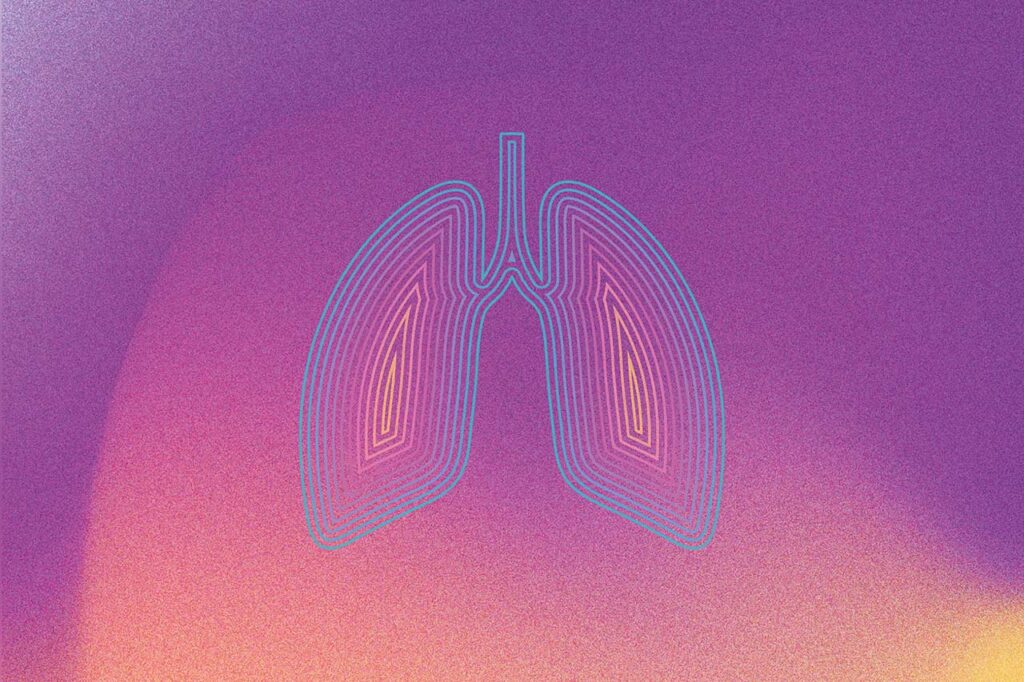[LUM#20] My lung stopped beating
While the reputation of the heart is well established, it is often overlooked that the proper functioning of the lungs is also conditioned by a heartbeat: that of the multicellular cells. To cure the pathologies that affect these vital cells, researchers in regenerative medicine are going back into the cycle of life.

A good case of bronchitis and you're left "coughing up your lungs". It's not a very pleasant phenomenon, but it's a sign that your bronchial tubes are working properly: to get rid of dust and germs, they secrete a mucus capable of agglomerating these impurities. But how do our lungs expel this mucus? "Our bronchial tubes are lined with a bronchial epithelium made up of cells whose surface is covered with cilia. By producing a beat, these cilia direct the mucus so that it rises and is expelled," explains John De Vos, a researcher in regenerative medicine at theIRMB.1. When these multi-ciliated cells fail to function properly, we speak of primitive ciliary dyskinesia (PCD). These are rare and serious pathologies which may require a lung transplant.
Modern alchemy
With the aim of restoring the movement of these multicellular cells, John De Vos and Arnaud Bourdin, a lung specialist at Montpellier University Hospital, have been working for several years on induced pluripotent stem cells (iPS). "To understand iPS cells, I like to remember that we are made up of differentiated cells, stable over time, which make up skin, bone, liver, lung, etc." These cells begin to differentiate from day 5 or 6 of human embryonic development. At this immature stage, we speak of pluripotent cells, in other words cells capable of reproducing ad infinitum and differentiating into all the cell types that make up a human organism.
Based on the work of Shinya Yamanaka(Shinya Yamanaka, father of pluripotent stem cells, 8/10/2012, Le Monde), winner of the 2012 Nobel Prize, the two Montpellier researchers have succeeded in transforming stable adult blood cells into undifferentiated cells, known as induced pluripotent cells (iPS). " From a simple blood sample taken from a patient suffering from ciliary dyskinesia, and thanks to a rather simple technique consisting in turning on 4 embryonic genes, we obtain these iPS cells", explains John De Vos. These iPS cells were then placed for a week in a medium mimicking the embryo's natural environment and "guided" to obtain lung cells. Placed in the right conditions, they will produce bronchial epithelium in around 40 days. "Sometimes I use an image that's alchemy, but instead of making gold out of lead, we're turning blood into bronchus." (Watch John Devos's lecture on Reprogrammed stem cells to model the bronchus at the 9th congress of the association médecine/pharmacie sciences).
Bronchial tubes in condition
Since the aim was to replace the diseased epithelium with a new, healthy one, the researchers had to genetically modify the cells affected by DCP. " This work, carried out by Joffrey Mianné as part of his thesis, made it possible to repair the patient's genetic anomaly in her IPS line and make a bronchial epithelium capable of beating again." To graft this epithelium effectively, John De Vos and his team will first have to condition the patient's bronchi. "If we deposit the repaired cells on the surface of the diseased epithelium, they risk being expelled like any other dust. So we'll have to scrape it off, one bronchus at a time, before injecting the new cells. Animal trials will begin in the coming months, with the hope of getting patients' lungs and hearts beating again in a few years' time.
UM podcasts are now available on your favorite platforms (Spotify, Deezer, Apple podcasts, Amazon Music...).
- IRMB (UM, Inserm)
︎